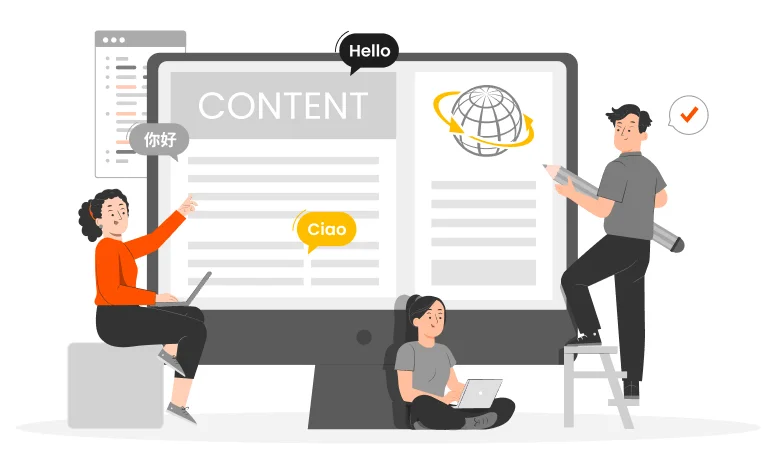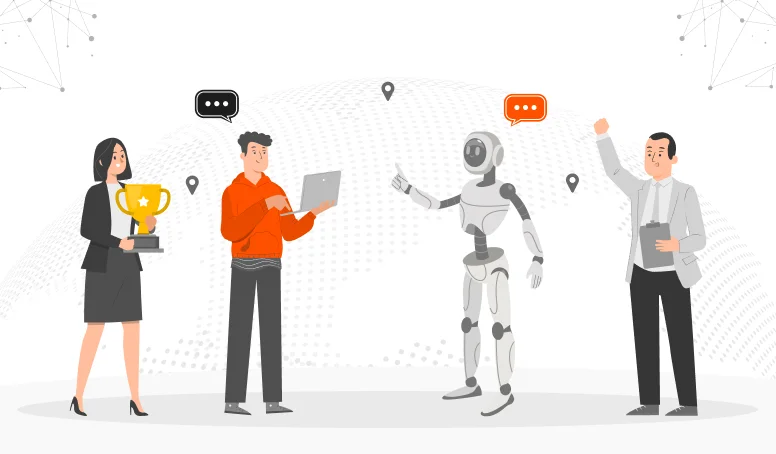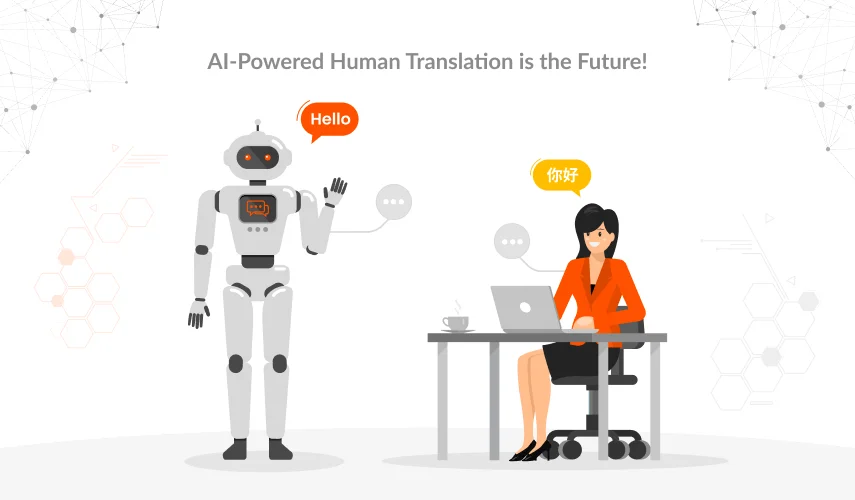Unlike other industries of the world, the translation industry has also made progress. They have developed machine translation systems and different applications that can use innovative machine technologies to translate a large amount of data from one language to another. These machine translation systems are very easy to use, but the technology that is used for their development is very complex. It involves the use of different innovative technologies like artificial intelligence, linguistics, web APIs, and cloud computing. In 2010, new artificial technology and deep neural networks came up with the technology that helps in speech recognition. They assist Microsoft translators in using speech recognition for machine translation software so that they can develop a new speech translation technology. Previously, the basic machine translation tools that were used in the industry were statistical machine translation. The SMT uses different statistical models to provide the best possible translations for a word that is written in the context. Do you know that giant translation companies have been using SMT since the mid-2000s, including Microsoft?
When neural machine translation was invented, it resulted in the use of translation technology for precise and accurate translation results. This translation technology was deployed by the developers and users in the latter half of 2016. If you want to use SMT and NMT then you should have 2 things in common.
- You must have a large amount of translated content to train the machine.
- Translate the content on a context basis rather than translating words
Translation with Neural Networks
At the back end of the translation system is a neural network. They translate the sentences one by one. Do you want to know what a neural translation system is? It is a network of two neural systems that are integrated.
The first system helps to learn to encode a sequence of words that depicts it in numbers and shows their meanings. The second neural network helps to decode those numbers in the systematic series of words that represent the same thing.
The concept behind this is that the encoder enters the words in one language, whereas the decoder outputs in different languages. Thus, the neural network helps in translation through intermediate numerical encoding. To encode and decode the meaning of a sentence, the other neural network that is used is called a recurrent neural network. The important thing to note is that a standard neural network has no memory. Therefore, whatever the input you give to it. It comes up with the same results. Contrary to this, the recurrent neural network is recurrent. This is because the last input you give to it will change the result. This is very important to use in a machine translation system because each sentence is different from the other. The context depicts the meaning of each word. When each sentence in the word depicts the meaning of another word, it helps to capture the intended message. If you give instructions to the neural network, My name is, and instruct it to encode. It will ask for assistance from the previous sentence to encode and represent John as a name.
Transformer Model
You can also use another approach for translation, which is called a model of transformer. The important part of this machine translation tool is that it defines the contextual meaning of each word by demonstrating the cross-relationship between each word, despite considering the sequence of the words.
Normalize the Text
A neural network works only on formatted text. It will alter the data in which it is trained. If a neural network is not fed with the data, then it will not automatically know that it is the same word as clothes. What is the solution to this problem? The solution is to normalize the text. Try to remove the formatting differences. Remember to keep the capital words in the same context as before, and clean up all formatting and punctuation. The main concept is to feed the data in the same format, no matter how the user has typed it. For instance, I visited the UK. The word the UK is capitalized because it is a proper noun. Formatting in this way will make the work of neural networks easy.
For accurate results, you must divide the text into sentences. In this way, the neural network will be able to translate one sentence at a time. If you try to feed the entire paragraph, then it will provide you with poor results.
Dividing the sentence might seem easy to you, but it is a difficult task because people use punctuation and formatting differently. For this, you can use a simple sentence splitter which is written in Python. In this way, you don’t have to go for 3rd party libraries. If it does not fulfill your requirement, then you can use NLP libraries such as spaCy.
Normalization of the text is a very important step, so don’t forget it. Otherwise, you will not get the desired results. After normalization of the text, you are ready to feed it to the translation model. Moreover, you must reverse the sentence splitting and text normalization to get results. In short, we must de-normalize the steps and then incorporate the text in the sentences.
Deep Learning Framework for Machine Translation System
The other translation model used in the translation is Marian NMT. It is a C++ based machine-learning tool that is designed for machine translation. To your surprise, it is developed by the Microsoft translator team. It contains different neural translation models that are already built in. Two other machine translation tools are TensorFlow and PyTorch, but they are only good for experimentation and testing new neural network designs. If you want to use a machine translation system for real-world users, then you don’t have to use any other translation tool.
Marian NMT is a specialized machine translation tool. It helps to design and build production-level translation systems. It acts as a machine translation software that is getting mature with time because its usage has increased.
Use of Desktop Computer
If you want to use Marian, then you must have a computer in which you can use Linux. Moreover, any powerful computer can be used. You can use Marian with a single GPU or with several GPUs to speed up the process. However, each GPU must possess enough memory so that it can accommodate the model and training data. In short two GPUs with 4 GB of memory will not work, so you should use a single GPU with 8 GB of memory.
How to Prepare Your Computer
Do you know that although Marian is supported by Microsoft it does not run on Windows? Moreover, it is also not supported by Mac OS. What to do then? You should install Linux or rent a Linux machine from a Cloud vendor. It is recommended to install Ubuntu Linux 18.04. However, Ubuntu Linux 20.04 has also been released. But your GPU drivers will take a lot of time to update. Therefore, don’t use Ubuntu unless you are not aware of installation problems.
Install cuDNN Libraries and Nvidia’s CUDA
Installing cuDNN Libraries and Nvidia’s CUDA will help Marian to fasten your training process, so you should prepare yourself for installing these machine translation software
If you are using Ubuntu Linux 18.04 version, then install CUDA /cuDNN version 10.1. These versions will resonate with Marian. To install
- Install the matching cuDNN version
- Install CUDA 10.1
Finding Training Data
For the training of the translation model, you must have data of lots of sentences that are properly formatted. However, they should not be translated into two languages. It is called parallel corpora. If you feed more sentences, then your translation model will learn how to translate different texts. Do you want to create an industrial-strength model, and then use thousands of sentences? Moreover, these sentences should cover all the verbal expressions like jokes and slang.
The number of sentences can make your machine translation system good or bad. It entirely depends upon the training data. Fortunately, at present, we can find lots of parallel material that we can alter into sentences with different methods.
We can easily get legal and formal data from the European Union. They get their documents translated into many languages, including Spanish and English. Along with this, we can find cross-cultural legal texts from global agencies like the European Central Bank and the United Nations. Moreover, if you are looking for historical writings then you can find them from the classic books which are translated into some languages. The books that are not copyrighted, you can make translations of their work and create the pair of sentences in the same way.
You should keep in mind that you are collecting data from a variety of sources. Therefore, you might get some duplicate or bad data. To work with large data, you should prepare yourself to fix different issues.
Wrapping Up
If you have a love for languages and have some technical background, then you will easily build a machine translation system. Remember, translation is universally required, so the demand and need for machine translation tools will never end.



